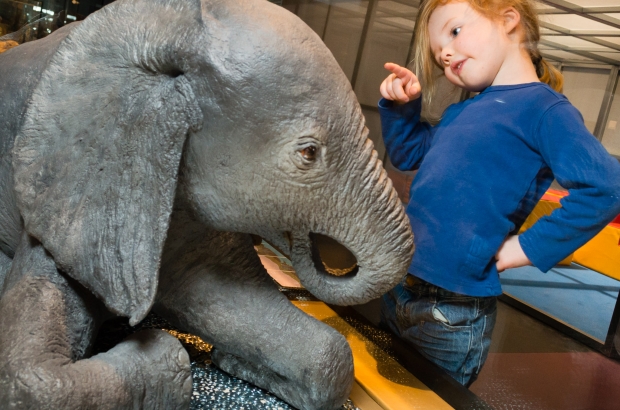- Daily & Weekly newsletters
- Buy & download The Bulletin
- Comment on our articles
All creatures cute and cruel
Kids can meet their animal peers in a new exhibition at Brussels’ Museum of Natural Sciences. Most of the baby animals on show are, as you might imagine, cuddly and cute. But there’s also the ugly duckling and the mother hamster who eats her own offspring. Entering the exhibition hall, you get the feeling you’ve stepped into a daycare centre. Kids are everywhere: playing with weird foam toys, obsessively tapping on touch screens and squeezing themselves inside and around structures you’d expect to find in a playground. It’s the museum world turned upside-down.
“For once, these kids don’t have to be quiet so their parents can enjoy a peaceful visit to the museum,” explains Yannick Siebens, the museum’s press officer. “Now it’s the parents who have to adapt, reading out loud information labels, explaining to their kids what kind of animal they are stroking, or even carrying giant toad eggs on their backs.”
Baby Animals is aimed at children aged three to eight, who follow a learn-and-do track that takes in 75 species. Some of them look exactly like a miniature version of their parents, while others don’t look like the adults at all.
The best example of the former is the baby chameleon, which looks just like a shrunken adult chameleon, or the baby giraffe, which already has a long neck. The second group is represented by toads, which start their life as tadpoles, and by butterflies, which undergo a total transformation of their inner and outer body.
Growing pains
The main theme of this exhibition holds for any newborn creature on this planet, including the young visitors: I was born, and I have to learn to be independent. The exhibition track ends when the animals can fend for themselves as young grown-ups.
The baby animals are in fact real, many of them stuffed especially for this exhibition. “These animals come from our collection or from the Museum of Natural History in Toulouse, our partner institution,” says Siebens. “They were shot in the wild many years ago – when this was still allowed – or they died in a zoo.”
Visitors are encouraged to touch all the animals, to discover how weird the fur of a baby polar bear feels or how leathery the skin of a baby elephant. The exhibition is packed full of interactivity: children crawl like snails inside a tube and experience how different types of soil makes it easier or harder to progress. Or they try to make the softest nest possible out of a range of foam and plastic elements. Or they load their dad’s back with eggs – in a toad’s household the males are responsible for carrying and hatching the eggs.
Decisions, decisions
On several screens, children can learn what it means when their peers from the animal kingdom make a mistake. Sea turtles, for example, live underwater, but the females lay their eggs on the beach. When they come out, the baby turtles rush across the sand to the sea – an easy target for seabirds hovering above. By touching buttons, children can choose the sudden-death scenario (crawl to the sea) or the intelligent and safe option (dig a tunnel). If they choose incorrectly, they witness one of the basic laws of nature: Most baby animals don’t reach adulthood. To pinpoint that fundamental truth, Baby Animals also shows a film of a hamster that eats her own offspring, because she’s unable to feed them all. Many parents might find that inappropriate, “but the children don’t seem to mind,” says Siebens.
They also don’t mind that not every baby animal is cute or has a fluffy coat. “Obviously, children feel at ease with cute animals, but they also appreciate baby or adult animals that are not the prettiest nor the friendliest,” says Siebens. “It’s all about fascination. A large crocodile trying to pull a baby elephant into the water, foxes capturing birds, a mother hamster eating her babies... It’s definitely not just about being cute: A young peregrine falcon or a naked gorilla baby are not the prettiest animals.”
Museum of Natural Sciences, 29 Rue Vautier, Brussels; www.naturalsciences.be - until March 2014
This article first appeared in Flanders Today




















